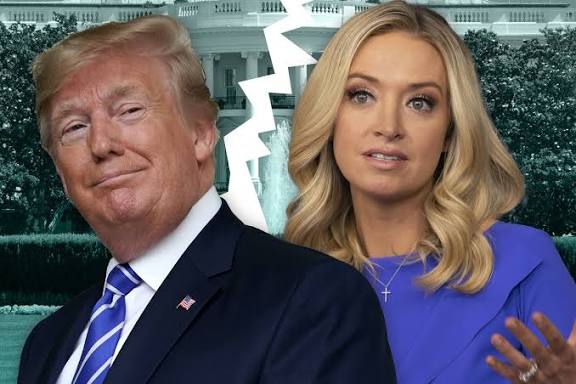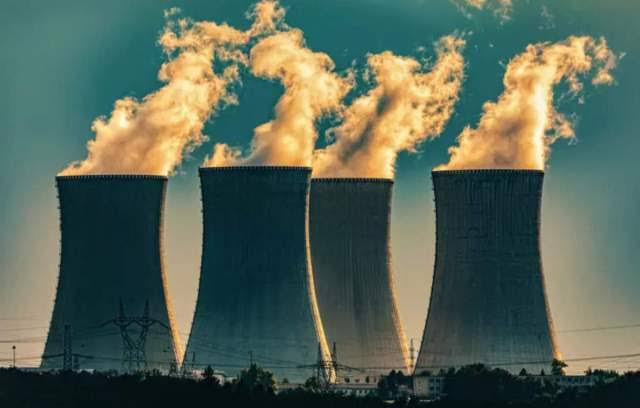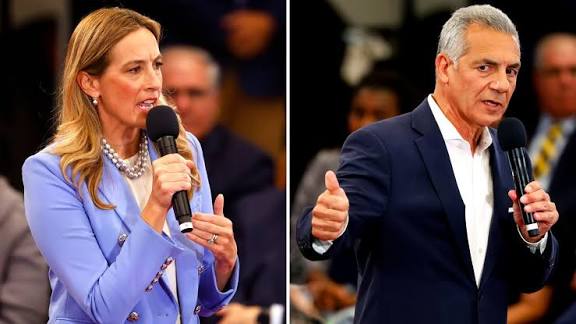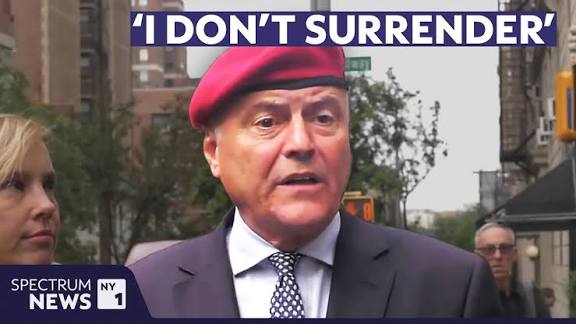UK Synagogue Assault Declared Terror Incident: Two Killed,Several Hurt
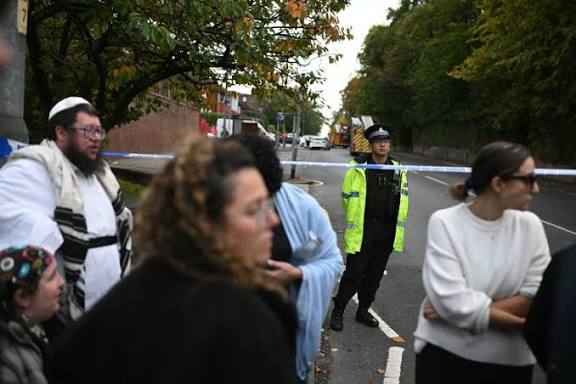
At least 2 people have been killed with a car outside a symbol in Manchester. Today we will discuss about UK Synagogue Assault Declared Terror Incident: Two Killed,Several Hurt
UK Synagogue Assault Declared Terror Incident: Two Killed,Several Hurt
On 2 October 2025, a devastating and shocking attack took place outside the Heaton Park Hebrew Congregation Synagogue in Manchester, England. The day was Yom Kippur, the holiest day on the Jewish calendar, when worshippers gather for solemn prayer, fasting, and reflection. What began as a religious observance transformed, in mere minutes, into a scene of chaos, fear, and tragedy.
British authorities have since declared the episode to be a terrorist incident, after linking the assailant’s actions to extremist motives. Two members of the public lost their lives, multiple others were gravely injured, and the suspect was shot dead by police. In this article we examine the attack’s sequence, the evolving investigation, the broader context of antisemitism, and implications for security and community relations.
Sequence of Events: Attack, Response, and Aftermath
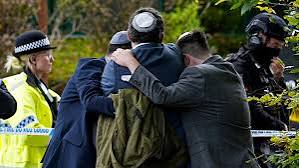
The Attack Itself
-
At approximately 9:31 a.m. BST, emergency services received calls reporting that a vehicle was being driven into pedestrians near the synagogue in Crumpsall, north Manchester.
-
Simultaneously, reports came in that a security guard at the synagogue had been stabbed, and that multiple individuals were under attack.
-
Armed police were brought to the scene around 9:34 a.m., as the situation escalated.
-
At 9:38 a.m., firearms officers engaged and shot a man believed to be the perpetrator. He was declared dead later.
According to eyewitnesses and official briefings, the assailant first rammed the vehicle into bystanders, then exited and began stabbing those nearby, including security staff. He apparently tried to force entry into the synagogue building but was thwarted by internal security measures.
Aftermath and Explosive Precautions
Because the suspect was found bearing items that appeared suspicious, including a vest resembling an explosive device, a bomb disposal unit was called to the scene, and a controlled explosion was later carried out. Authorities have not publicly confirmed whether the vest was functional or was a hoax.
The attack triggered the activation of the national “Plato” protocol, a code word used by UK police and emergency services when responding to a marauding terror attack in progress.
Roads near Middleton Road, adjacent to the synagogue, were swiftly cordoned off, and paramedics arrived by 9:41 a.m. to treat victims.
Human Toll: Fatalities and Injuries
In total, two civilians were confirmed dead at the scene. Several others—reports vary between three to four—were seriously injured, some due to both vehicle impact and knife wounds.
Police confirmed that two individuals have been arrested in connection with the attack, though their roles and identities have not been fully disclosed. The assailant’s identity is believed to be known to law enforcement, but authorities cited “safety reasons” for withholding it.
Eyewitnesses described scenes of terror, with crowds scattering, shocked worshippers being ushered to safety, and security personnel acting swiftly to prevent the intruder from entering the synagogue’s interior. One local neighbor reported hearing gunshots and explosives, and seeing police shouting to bystanders, “He has a bomb, go away!”
Investigative Classification: Why Terror?
From the outset, UK authorities treated the incident as more than a mere violent crime. Within hours, the Counter Terrorism Command officially declared it a terrorist incident.
The decision draws on multiple indicators:
-
Targeting of Jews / a house of worship
The assault occurred at a synagogue on Yom Kippur—a religiously significant target at a sacred time. The Prime Minister later called out that the suspect “attacked Jews because they are Jews.” -
Method and intent
The use of a vehicle to ram into civilians, combined with stabbing and the apparent presence of an explosive device, aligns with tactics seen in terror attacks elsewhere. The escalation suggests planning and intent beyond spontaneous violence. -
Timing and symbolism
Choosing Yom Kippur heightens the symbolic weight of the act, striking at a moment of communal vulnerability. Religious holidays have historically been used by attackers seeking maximum psychological impact. -
Multiple actors and arrests
The fact that two individuals have been arrested suggests possible coordination or complicity, pointing toward an orchestrated effort rather than lone criminal behavior.
The declaration of terrorism enables access to specialized investigative resources, coordination with intelligence agencies, and stricter prosecutorial tools.
Context: Rising Antisemitism in the UK
This attack is not an isolated event but emerges amid growing concern over antisemitic incidents in the UK, particularly since the conflict between Israel and Hamas intensified in 2023.
-
In 2023, the Community Security Trust (CST), a Jewish security and monitoring organization, recorded 4,296 antisemitic incidents—a record high.
-
In 2024, CST documented 3,528 incidents, making it the second-worst year on record.
-
More recently, reports suggest rising tensions and animosities at synagogues and Jewish community centers across the UK.
In Manchester, the Jewish community has long been established, representing one of the largest Jewish populations outside London. The region has invested in synagogue security, yet many congregants had feared that such an attack might one day occur.
Historically, attacks on synagogues are not new. For instance:
-
In 2019, a neo-Nazi attacker in Halle, Germany attempted to enter a synagogue during Yom Kippur, killing two outside.
-
In 1981, Vienna’s central synagogue was attacked with gunfire and grenades, killing two civilians.
These acts reflect a broader pattern of antisemitic violence globally, where places of worship are targeted for symbolic and mass impact.
Reactions: National, Community & Global
UK Government & Security Leadership
-
Prime Minister Keir Starmer immediately condemned the attack as “absolutely shocking” and “all the more horrific” given its timing on Yom Kippur. He cut short his trip abroad to convene an emergency COBRA meeting.
-
The government has pledged enhanced security across synagogues and Jewish institutions nationwide.
-
Home Secretary Shabana Mahmood said she was “horrified” by the incident and emphasized a constant flow of communication with police.
-
King Charles III and Queen Camilla issued statements expressing deep shock and condolences, noting the attack’s particularly painful symbolism.
Senior counterterrorism officials, such as Assistant Commissioner Laurence Taylor, have vowed full investigative rigor, coordinating with security agencies and urging public vigilance.
Jewish Community & Local Leaders
Within Manchester’s Jewish community, grief has mingled with anger and anxiety. Worshippers expressed disbelief that a place of worship, on the holiest of days, could be violated so violently. Community leaders have called for stronger protection, accountability, and condemnation of antisemitism in all its forms.
Rabbi and congregants inside the synagogue have been lauded for their swift actions in securing the building and shielding worshippers from further harm.
In cities across the UK—including Glasgow—synagogues have already begun increasing visible security presence and coordinating more closely with law enforcement in response to the Manchester attack.
Internationally, leaders from Israel and Jewish organizations worldwide called the act “abhorrent” and assured cooperation in investigation and support.
Analysis: Causes, Challenges, and Lessons
Motivations & Radicalization
While full details remain under investigation, some plausible motivations emerge:
-
Ideological extremism / hate motivation: The explicit targeting of Jews and a synagogue strongly suggests antisemitic intent.
-
Symbolic timing and location: Choosing Yom Kippur amplifies the attack’s psychological and symbolic impact.
-
Copycat dynamics / global contagion: Terror tactics often echo those used elsewhere, especially during heightened global tensions.
-
Local networks / multiple actors: The arrests hint at possible prior coordination, support, or facilitation.
Understanding the path to radicalization will be critical to preventing future attacks. Investigators will likely examine social media, extremist networks, acquaintances, travel history, and previous behavior.
Security At Places of Worship
This attack underscores a stark reality: religious institutions—particularly minority faith houses—remain vulnerable targets. Key takeaways:
-
Perimeter security is vital
Barriers, bollards, controlled entrances, and screening protocols can slow down or deter vehicular and foot intrusions. -
Internal security systems and training
Guards and staff trained in lockdown procedures, threat recognition, and evacuation dramatically reduce harm during emergencies. -
Coordination with law enforcement
Close relationships with local police, including preset response plans and communication channels, improve speed and effectiveness of response. -
Intelligence and threat monitoring
Community organizations must maintain vigilance, monitor rising threats, and share relevant intelligence with authorities.
Social and Political Dimensions
This incident will almost certainly intensify debates around hate crime legislation, free expression, foreign policy, and community cohesion.
-
Some may call for stricter anti-hate laws, more aggressive policing of extremist speech, or surveillance of suspect networks.
-
Others may warn against overreach, profiling, or stigmatizing religious or ethnic groups.
-
Immigration, foreign policy (especially concerning the Israeli–Palestinian conflict), and international alliances may come under renewed scrutiny as politicians and the public assign blame or propose responses.
Balancing Security and Openness
Religious spaces are not meant to be fortresses. Maintaining accessibility, warmth, and community openness is necessary. The challenge is achieving that balance without leaving congregants exposed.
What Happens Next
Investigation Trajectory
-
Forensic analysis of the suspect’s vehicle, weapons, clothing, and any electronic devices.
-
Interrogation of arrested individuals, assessing whether they acted in concert or as support.
-
Tracing ideological or material links to extremist networks, locally or internationally.
-
Autopsy and victim impact reports to understand injury patterns and vulnerabilities.
-
Security audits of synagogues across the UK to detect and mitigate weak points.
Legal and Counterterrorism Action
-
Prosecutors may bring charges of terrorism, murder, and conspiracy, which carry stringent penalties.
-
Intelligence agencies may reassess threat levels to Jewish institutions and issue advisories.
-
Authorities may propose new legislation or funding to bolster community security and counter violent extremism.
Community Healing and Resilience
-
Support services, counseling, trauma care, and interfaith solidarity will be essential to help victims and congregants recover.
-
Public memorials and vigils may serve as symbols of defiance against hatred.
-
Education campaigns—especially in schools and interfaith circles—can raise awareness about antisemitism and how to combat it.
Policy Responses
-
The UK government may increase funding for synagogue and religious site security grants.
-
Enhanced surveillance or monitoring protocols could be instituted for known extremist platforms.
-
Civil-society groups may press for stronger enforcement of hate-speech laws, while guarding civil liberties.
Conclusion
The 2025 Manchester synagogue assault is a brutal reminder that houses of worship—even in societies that prize religious tolerance—are not immune from targeted violence. Declared a terrorist incident, the attack not only claimed lives and inflicted suffering, but struck at the symbolic heart of a community observing its holiest day.
In the wake of this tragedy, much depends on how governments, communities, and societies respond: with resolve, compassion, unity, and vigilance. The balance between security and openness, free society and protection, must be carefully navigated.
How useful was this post?
Click on a star to rate it!
Average rating 0 / 5. Vote count: 0
No votes so far! Be the first to rate this post.
About the Author
usa5911.com
Administrator
Hi, I’m Gurdeep Singh, a professional content writer from India with over 3 years of experience in the field. I specialize in covering U.S. politics, delivering timely and engaging content tailored specifically for an American audience. Along with my dedicated team, we track and report on all the latest political trends, news, and in-depth analysis shaping the United States today. Our goal is to provide clear, factual, and compelling content that keeps readers informed and engaged with the ever-changing political landscape.
